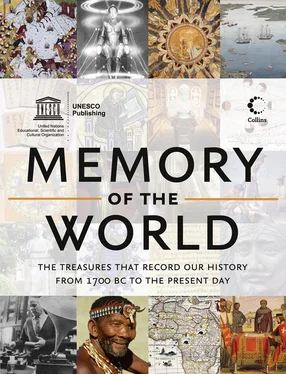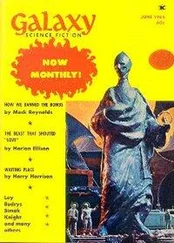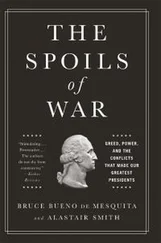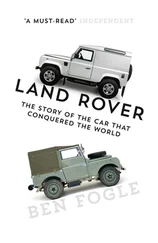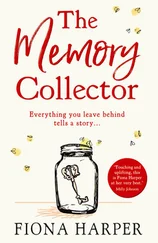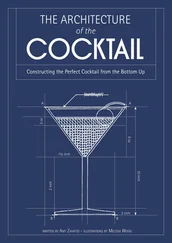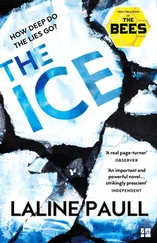Introduction of the decimal metric system, 1790–1837
The Leprosy Archives of Bergen
The Vienna City Library Schubert collection
The masterpieces of Fryderyk Chopin
Kinder- und Hausmärchen (Children’s and Household Tales)
General Archive of the Nation: Writings of The Liberator Simón Bolívar
The Søren Kierkegaard archives
Final document of the Congress of Vienna
Registry of Slaves of the British Caribbean 1817–1834
Csoma archive of the Library of the Hungarian Academy of Sciences
The Bleek collection
Ludwig van Beethoven: Symphony no. 9, D minor, op. 125
Royal archives (1824–1897)
Catecismo corticu pa uso di catolicanan di Curaçao (first catechism written in Papiamentu language)
Manuscripts and correspondence of Hans Christian Andersen
Records of the Indian indentured labourers
Farquharson’s Journal
Epigraphic archives of Wat Pho
János Bolyai: Appendix, Scientiam Spatii absolute veram exhibens
Brahms collection
Memory of the Suez Canal
The Treaty of Waitangi
The Emperor’s collection
Alfred Nobel family archives
Colonial archives, Benin
The A.E. Nordenskiöld Collection
‘José Martí Pérez’ fonds
Archival documents of King Chulalongkorn’s transformation of Siam (1868–1910)
Arnold Schönberg estate
Jinnah papers (Quaid-i-Azam)
Dainu Skapis – Cabinet of folksongs
Silver men: West Indian labourers at the Panama Canal
Henrik Ibsen: A Doll’s House
Nikola Tesla’s Archive
Benz patent of 1886
Correspondence of the late Sultan of Kedah (1882–1943)
The Historical Collections (1889–1955) of St Petersburg Phonogram Archives
German records of the National Archives
Manifesto of the Queensland Labour Party to the people of Queensland
The 1893 Women’s Suffrage Petition
Early cylinder recordings of the world’s musical traditions (1893–1952)397
Lumière films
Fonds of the Afrique occidentale française (AOF)
Historic ethnographic recordings (1898–1951) at the British Library
The historical collections (1899–1950) of the Vienna Phonogrammarchiv
Letter journals of Hendrik Witbooi
Russian posters of the end of the 19th and early 20th centuries
Collection of Latin American photographs of the 19th century
Presidential papers of Manuel L. Quezon
Sakubei Yamamoto collection
The Story of the Kelly Gang (1906)
Desmet collection
Roald Amundsen’s South Pole Expedition (1910–1912)
Collection of Jewish musical folklore (1912–1947)
Original records of Carlos Gardel – Horacio Loriente collection (1913–1935)
Archives of the International Prisoners of War Agency, 1914–1923
The Battle of the Somme
Collection of Russian, Ukrainian and Belarusian émigré periodicals 1918–1945
League of Nations archives 1919–1946
Constantine collection
First flight across the South Atlantic Ocean in 1922
Kalman Tihanyi’s 1926 patent application ‘Radioskop’
Metropolis – Sicherungsstück Nr. 1: Negative of the restored and reconstructed version (2001)
C.L.R. James collection
Documentary heritage on the resistance and struggle for human rights in the Dominican Republic, 1930–1961
Sir William Arthur Lewis papers
Thor Heyerdahl archives
Ingmar Bergman archives
The Wizard of Oz (Victor Fleming, 1939), produced by Metro-Goldwyn-Mayer
Warsaw Ghetto archives (Emanuel Ringelblum archives)
Astrid Lindgren archives
The Appeal of 18 June 1940
Diaries of Anne Frank
Archive of Warsaw Reconstruction Office
Archives of the Literary Institute in Paris (1946–2000)
Federal Archives fonds
Audiovisual documents of the international antinuclear movement ‘Nevada-Semipalatinsk’
UNRWA photo and film archives of Palestinian refugees
Los Olvidados
Nita Barrow collection
The Archives of Terror
John Marshall Ju/’hoan bushman film and video collection, 1950–2000
Traditional music sound archives
Neighbours, animated, directed and produced by Norman McLaren in 1952
José Maceda collection
Derek Walcott collection
The Family of Man
Christopher Okigbo collection
Eric Williams collection
The Mabo case manuscripts
Original negative of the Noticiero ICAIC Latinoamericano
Construction and fall of the Berlin Wall and the Two-Plus-Four-Treaty of 1990
Criminal Court Case No. 253/1963 (The State versus N. Mandela and Others)
Network of information and counter information on the military regime in Brazil (1964–1985)
First Byurakan Survey (FBS or Markarian survey)
Aral Sea archival fonds
Landsat Program records: Multispectral Scanner (MSS) sensors
Human Rights Archive of Chile
Tuol Sleng Genocide Museum archives
Human rights documentary heritage, 1976–1983
Liberation Struggle Living Archive Collection
Human rights documentary heritage, 1980
Twenty-One demands, Gdańsk, August 1980
National Literacy Crusade
Radio broadcast of the Philippine People Power Revolution
The Baltic Way – Human chain linking three states in their drive for freedom
Index
Contact information
Photo credits
Acknowledgements
Copyright
About the Publisher
Foreword
by Irina Bokova
Director-General of UNESCO

© UNESCO
UNESCO launched the Memory of the World Programme in 1992 to protect and promote the world’s documentary heritage through preservation and access – access to encourage protection, and preservation to ensure access.
This vision was vindicated a few months later, when on 25 August 1992, 1.5 million books in the Bosnia National and University Library in Sarajevo were destroyed. With this, a chapter of the history of humanity vanished. Too much of our heritage is lost like this in the heat of conflicts and through the twists and turns of history. Too much also lies hidden and inaccessible in libraries, museums and archives. This documentary heritage carries the memory of human experience. It is a vehicle for identity and a wellspring of knowledge and wisdom. For twenty years, UNESCO has worked to capture and to share this wealth for the benefit of all.
The UNESCO Memory of the World Registry contains today 245 documentary items from all parts of the world – from clay tablets, manuscripts and films to photographs, maps and web pages. This Register is our flagship to preserve, raise awareness and promote access to the documentary treasures of humanity. Preserving this heritage is important for maintaining the cultural heritage and identity of all societies. It safeguards our memories as a force shaping us as social beings in a common humanity.
The Memory of the World encourages every country to establish a national register and propose items for the international register. Heritage can be recorded on any of the carriers used to safeguard memories. These range from listings of archives relating to historical figures, such as Nelson Mandela and Alfred Nobel, to major historical events, voyages of exploration that have transformed the world, and the records of scientific discoveries and anthropological recordings. The scope is as vast, indeed, as is human experience.
Anne Frank’s Diaries or the Epigraphic Archives of Wat Pho need little explanation today. However, other items on the Register, such as the Sakubei Yamamoto collection and the 1824-1897 Royal Archives of Madagascar, may be less well-known but are no less emblematic of human ingenuity.
Читать дальше
